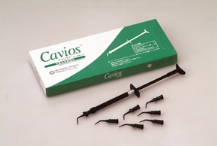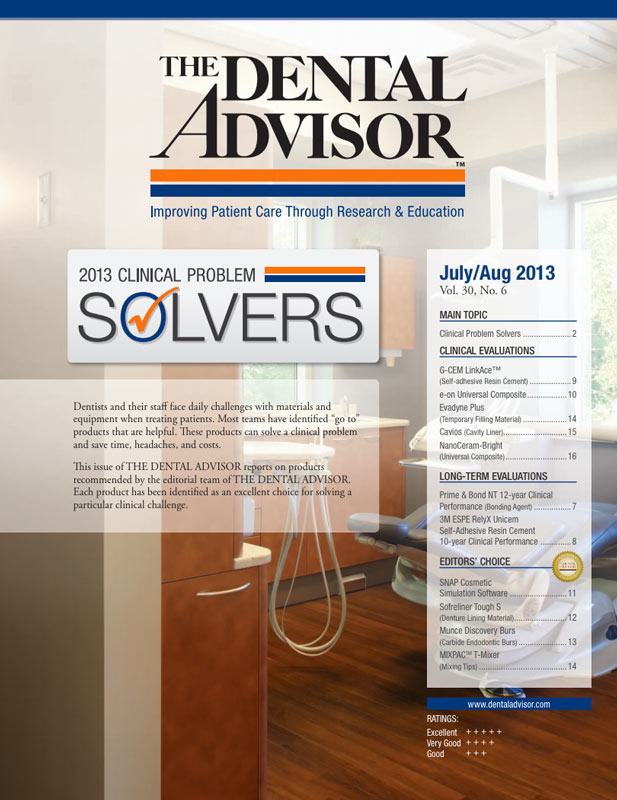Clinical Evaluations
Cavios
Consultants’ Comments
- “Easy to use.”
- “Clearly radiopaque.”
- “Adheres well to dentin.”
- “Blocks out stained dentin.”
- “Syringe is unnecessarily long.”
Description
Cavios is a pre-mixed cavity liner containing alpha-tricalcium phosphate (alpha-TCP). This light -cured, resin-based material is intended for use underneath composite and amalgam restorations. The alpha-TCP formulation is biocompatible with hard tissues. Cavios has a depth of cure of 1.3-2.5 mm and a curing time of 5-20 seconds depending on the light-curing unit. It is an opaque, slightly yellow paste available in 1.8 g syringes. The elongated and angled syringe tips dispense the material directly into the cavity preparation without an instrument. Each package includes one syringe of Cavios with 15 syringe tips. Cavios was evaluated by 25 consultants in over 601 uses. This cavity liner received an 87% clinical rating.
Product Features
Cavios performed well as a cavity liner by adhering effectively to dentin and setting to a hard surface. Subsequent placement of etching gels, primers and other materials do not disturb Cavios or alter its surface. The opaque color effectively masks stained dentin. Dental assistants liked that the liner was always “ready to go” with no mixing required. The material is supplied in a long, narrow syringe to aid in reaching posterior areas, but for many consultants it was hard to handle until it was partially empty. The syringe tips are narrow enough for direct placement, but the plastic cannot be bent to hold a desired angle. Forty percent of consultants rated Cavios better than other cavity liners they were using and 32% rated it equivalent. Thirty-six percent would switch to Cavios and 60% would recommend it to a colleague.
Clinical Tips
-
Cavios should not be used with materials containing eugenol as it interferes with the curing.
-
For direct pulp exposures, use a protective calcium hydroxide base.
-
Place a small amount of Cavios in the tooth then spread it with a ball-shaped instrument.


